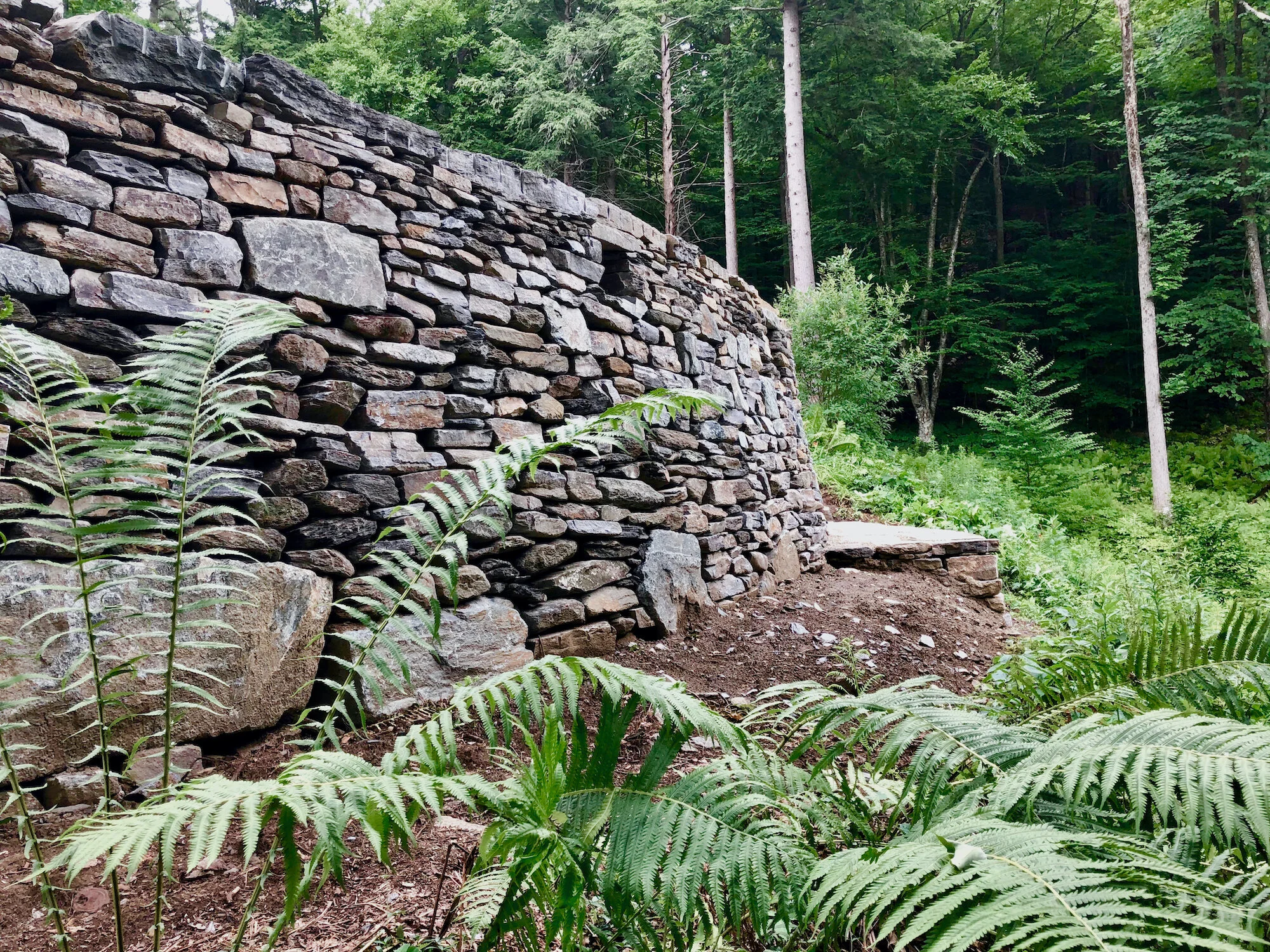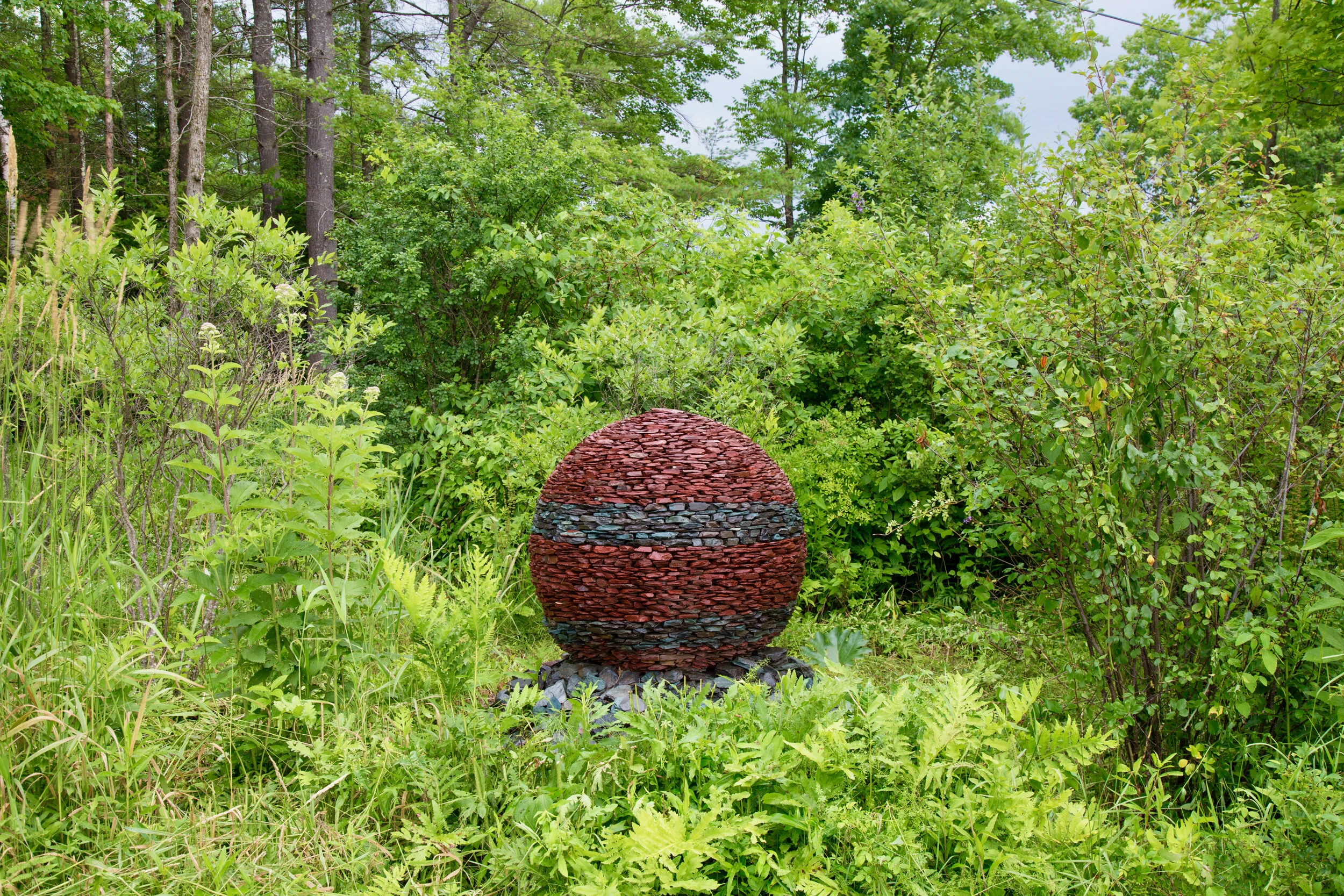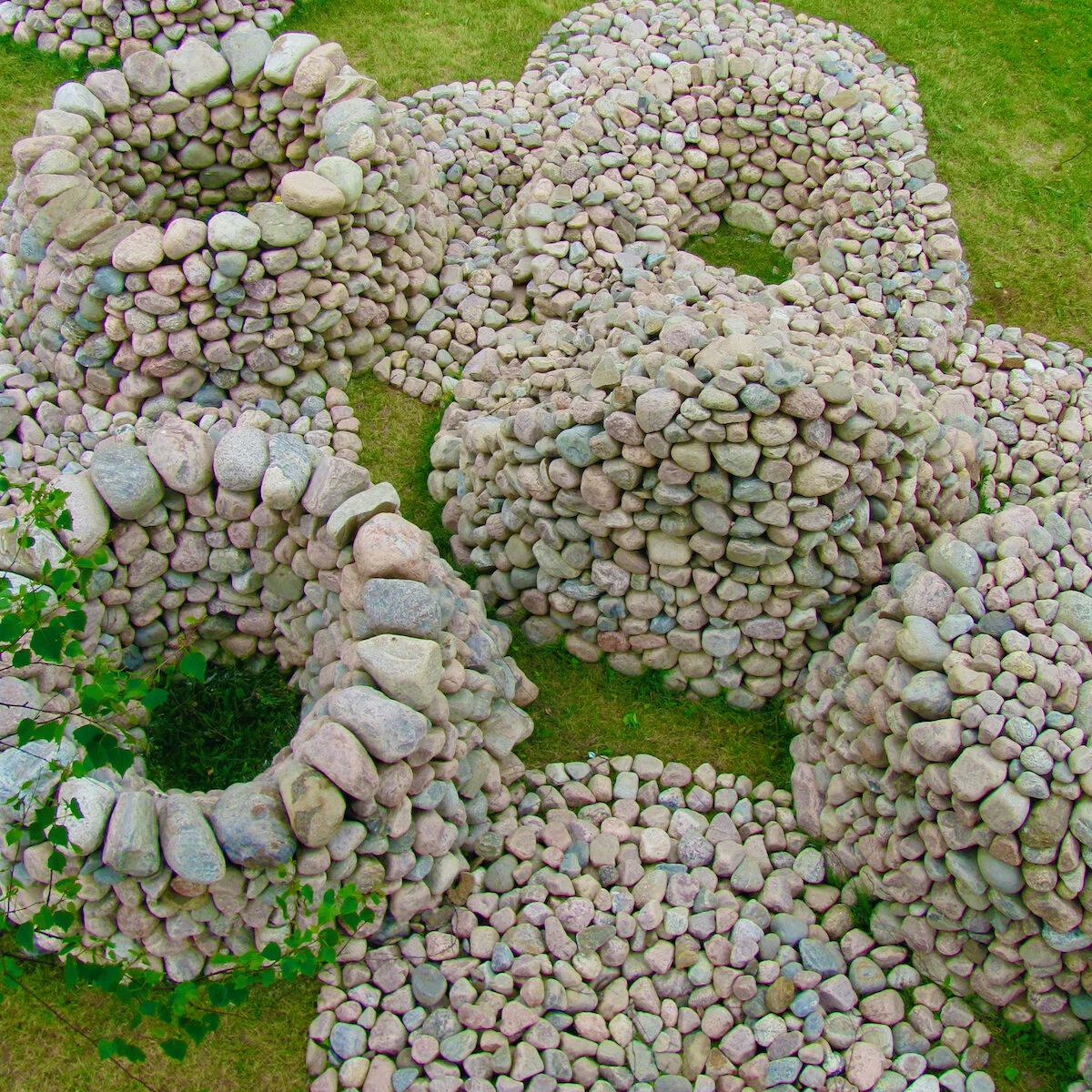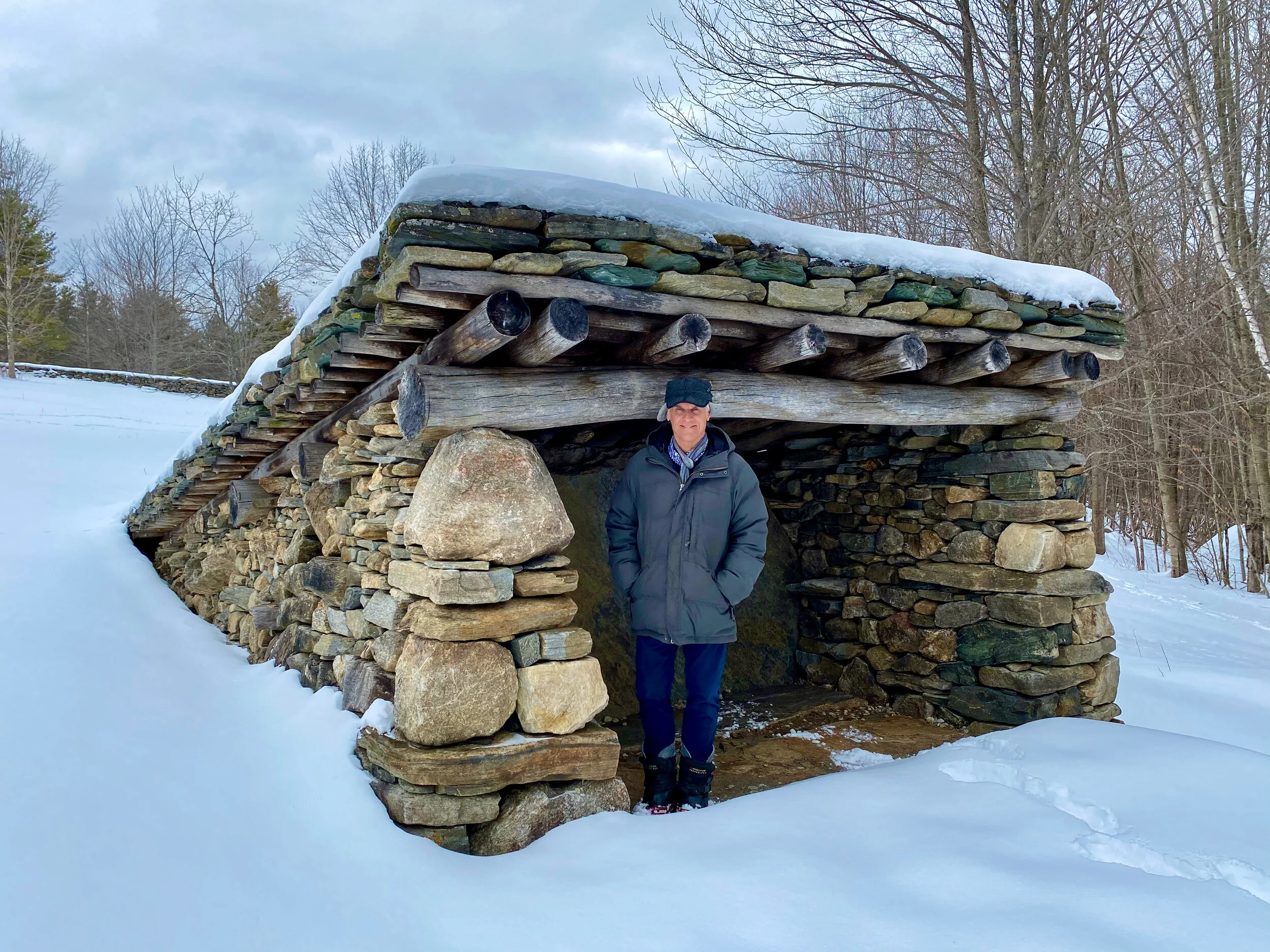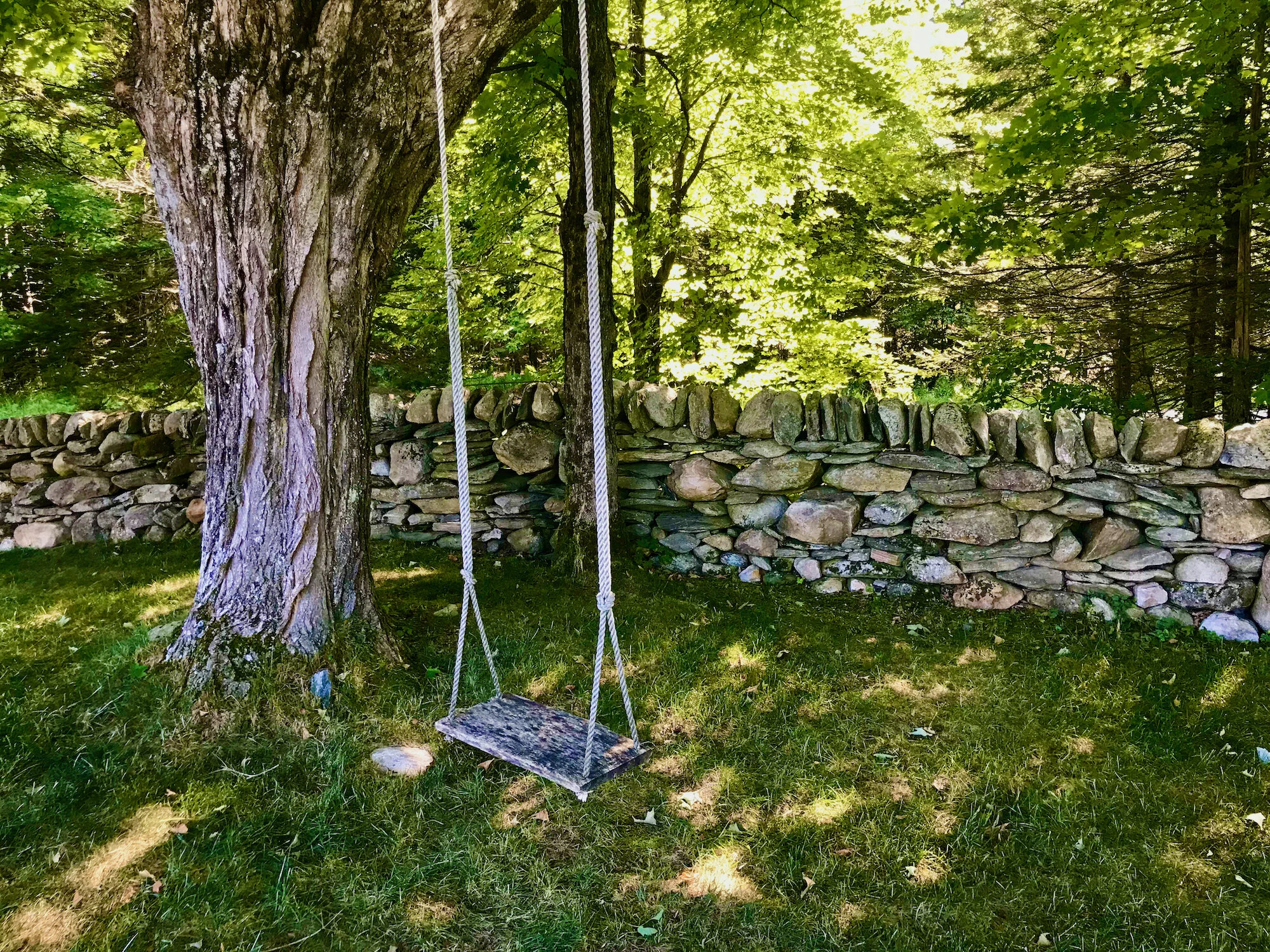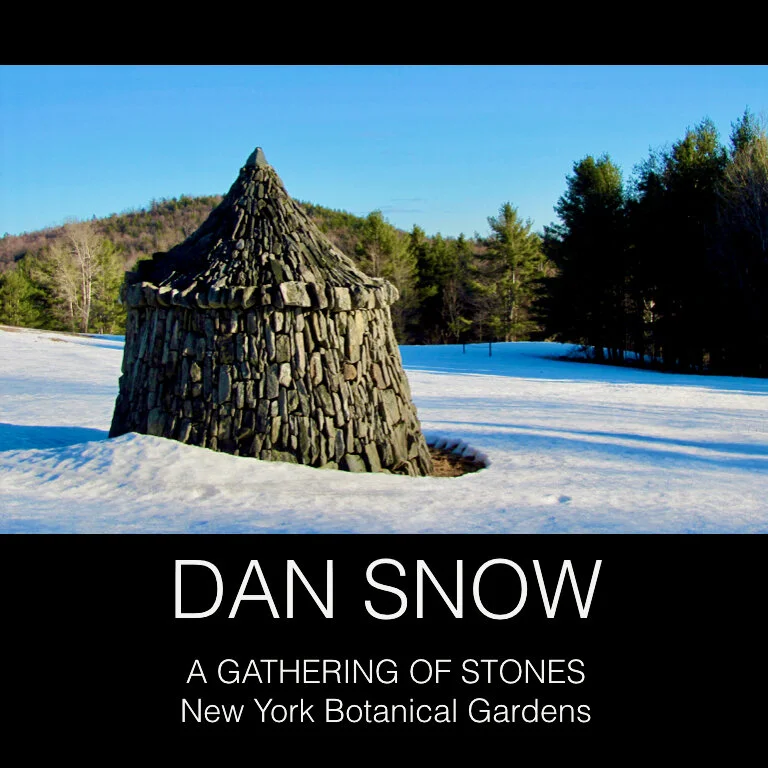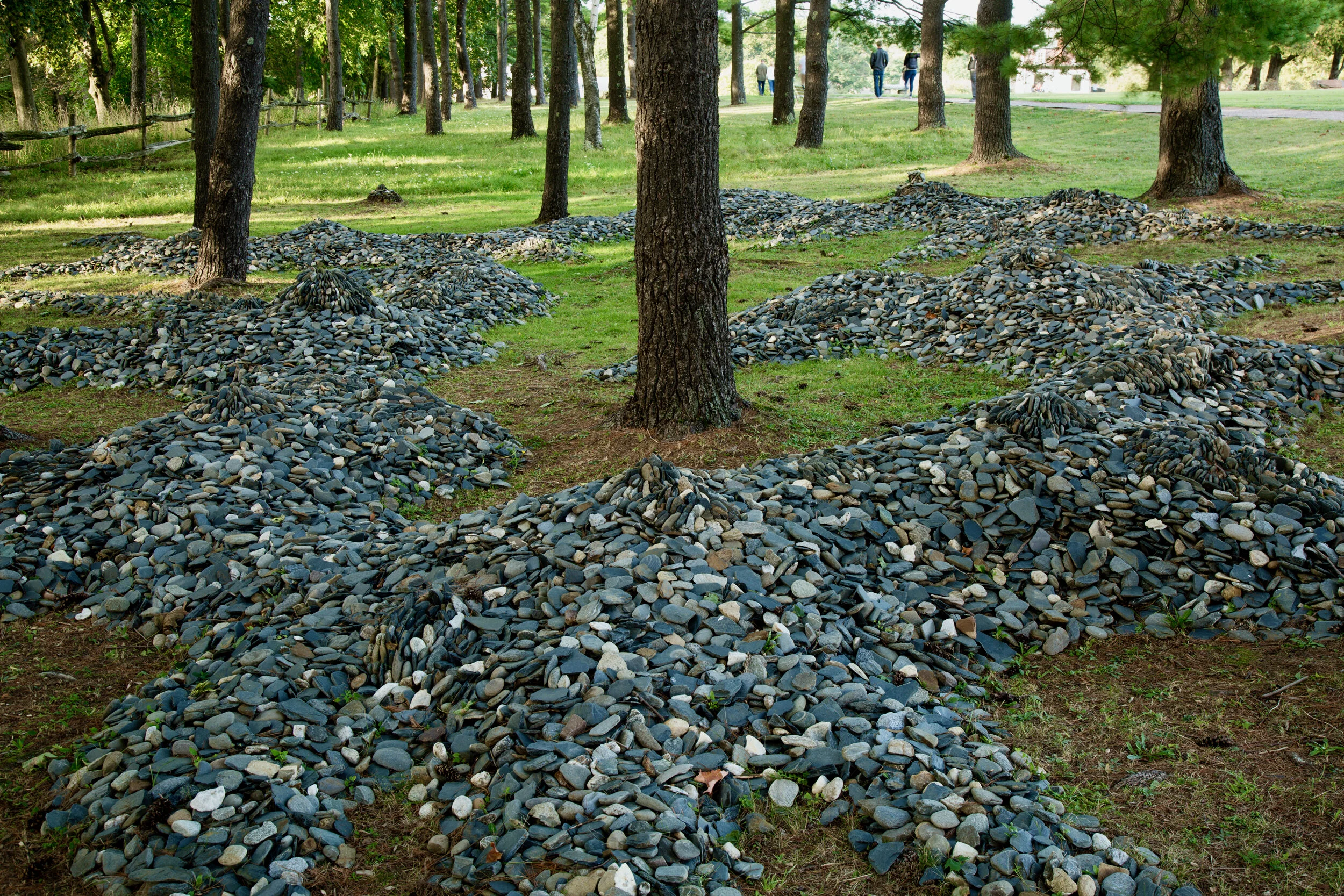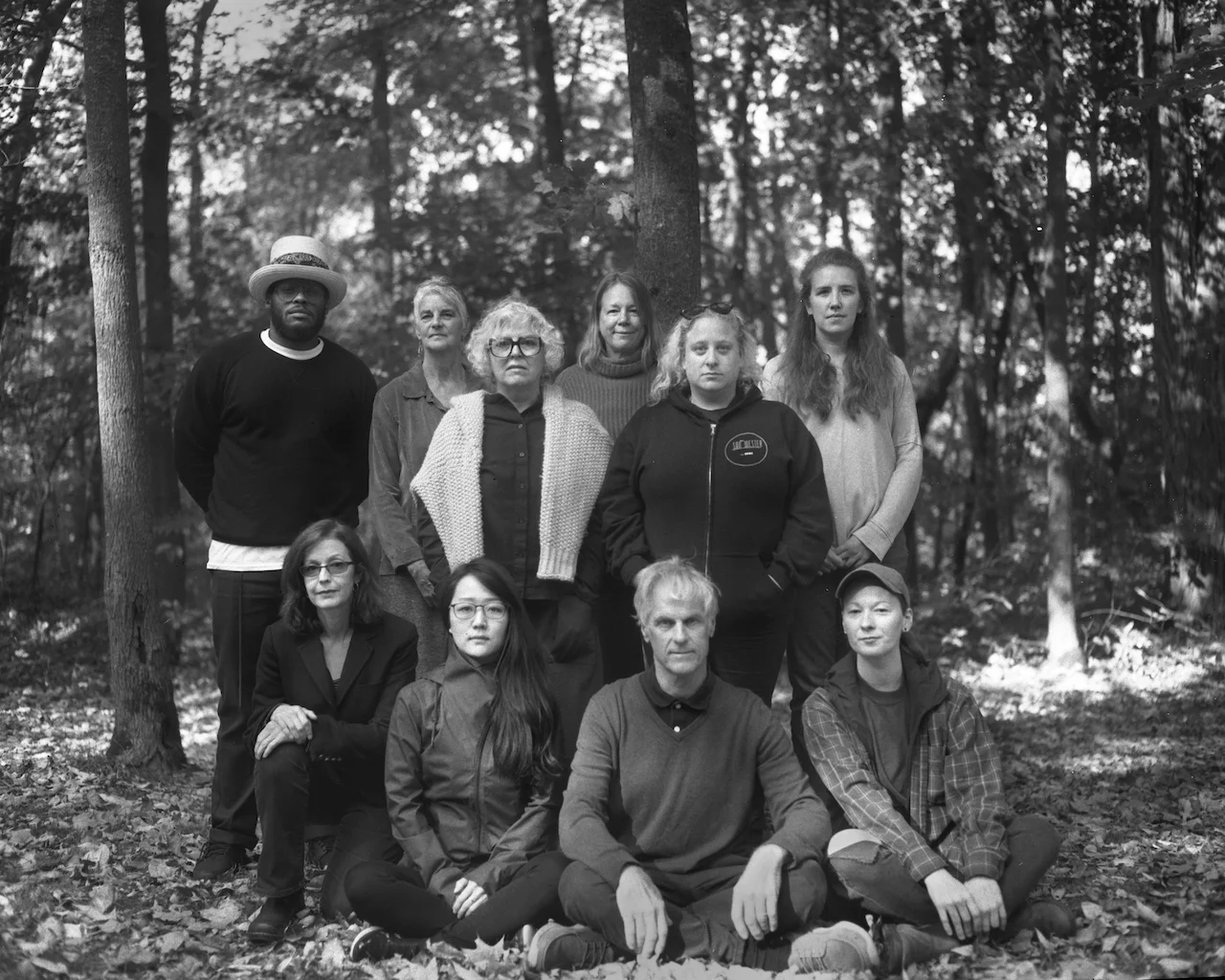If the rock scramble and stone sculpture I recently constructed for East End Park in Woodstock, Vermont looks a little like it could have been the result of coincidental events visited on the landscape, then I’ve succeeded in realizing my dream for it.
Read MoreIt was a simple enough question. How will excavation equipment get to the front of the house? That was the location of the intended project, but because of the side-hill terrain, it was a case of “you can’t get there from here.”
Read MoreThe Carving Studio and Sculpture Center in Rutland, Vermont is host to a sculpture park chock-full of outdoor delights. The dry stone wall built by participants from a workshop I instructed there in 2019 became the lead-in to a circular wall surround.
Read MoreA new client had a thorny issue in the form of a failing structure in a problematic location on their property. The home, a mid-century modern perched on a small plateau on the western flank of Mt. Peg in Woodstock, Vermont relied on a stone wall to retain a yard and garden. Without it, stepping out the front door would have put the homeowner back in time to when the site was a launch pad for the community toboggan run.
Read MoreArt is the neutral, but fertile ground that tolerance grows in. By letting our true nature play itself out through the imagination, maybe we can do ourselves some good and do less harm to the place we call home. We can breathe easy, and allow Earth to do likewise.
Read MoreThe world has gone aswirl in recent weeks, turning upside down and sideways like the colored bits inside a kaleidoscope. In these uncertain times, stay connected with hand-crafting traditions. Reach for the next best grip by trusting in the reality communicated through the fingertips. It links directly to the heart and mind with no translation required. Take care, and when you can, get some stone in your hands.
Read MoreRock Shelter is an environmental artwork that pays tribute to the materials it’s made from and the place it resides. The sculpture stands unpretentiously on the verge of a Vermont hayfield; a solitary figure with its back to the wind and face lifted to the low winter sun. The only perceivable change in the work since its creation is the mottled patina that’s grown over it.
Read MoreHearing the episode for the first time, the editing of my thoughts that are usually hashed out on the written page were magically accomplished without any effort at all on my part. Stefan had transformed what I feared would be barely coherent answers to his interview questions, into perfectly reasonable and measured responses!
Read MoreBesides being an advocate for the plant kingdom, New York Botanical Garden offers programs in horticulture, education, and science. It’s grown and managed a 250-acre garden in the heart of New York City for 128 years. Being an advocate of the mineral kingdom, I was delighted to be invited to speak on behalf of rocks at such an august institution.
Read MoreShelburne and Rokeby, along with other regional museums that focus on bygone days, are reaching out to artists for inspiration as they plan for meeting the future interests and needs of museum visitors. Collaborations, such as the two I recently took part in, give me hope that small, locally supported museums, like those that raised my awareness as a kid about the world around me, will continue to thrive. Their welcoming openness to new ideas is commendable.
Read MoreFantasy Topography rose up out of the forest floor last April. It became an object of intrigue for some of the visitors who wandered off the beaten path that circles the museum grounds. The pine tree glade has now returned to its former life as a quiet, shady glen. With all that passes, ours is the choice to hold in memory or let slip away.
Read MoreThis year, Rokeby Museum announced the launch of a new partnership with Kasini House designed to engage contemporary artists as interpreters of the museum’s unique history. Ric Kasini Kadour, Curator and Project Director of Contemporary Art at Rokeby Museum, invited the artist team of Dan Snow Stoneworks (Elin and Dan) to a series of workshops and discussions designed to foster the integration of history and contemporary art into an artist’s practice. We joined ten other artists from around the U.S. and Canada at the museum last month for four days of thought-provoking research and an exercise in project development.
Read MoreMovement is critical for getting into the moment, for being of a time and in a place. Perhaps the best thing an artist can offer a viewer is the chance to become a little more aware of themselves. Outdoor art spaces hold the potential for that to happen.
A recent special event at the Shelburne Museum drew a large crowd on a perfect summer evening. I was there to welcome visitors to Fantasy Topography, my temporary, environmental art installation in a pine grove on the grounds. It was great to see lots of people walking around and in the sculpture. Many thanks to those who stopped by to chat, and to the staff for all they do to make an enjoyable time for those attending the museum’s once-a-month, Free Friday.
Read MoreMost of the works done in the dry stone trade take place without fanfare. They serve basic needs by establishing boundaries, buttressing slopes and moderating ascents. They’re experienced as well-functioning while being hardly noticed. In fact, one sign of a successful new project is that those using it feel that it must have always been there. That doesn’t mean that it can’t be a sight to behold. Functional stonework can be arrestingly beautiful, often the more so with age. Stonework, done right, proves its worth day after day, year after year. The expense is left behind while the value continues forward.
Read MorePublished one hundred sixty-one years ago, the excerpt, below, from the November issue of “The New England Farmer” contains much the same advice contemporary walling instructors offer their students. Interestingly, many of the terms used to describe the craft are recognizable today. Although, as you'll discover in reading the final passage, production expectations have changed substantially since 1858, when a waller laid up, on average, three rods of stone fence in a day.
Read MoreNow and then it’s advisable to break from the routine of solitary building for a few days of walling with a stone compatriot. It’s a chance to share approaches to the craft and backgrounds in the business. Sharing a workspace after being alone takes some adjustment. Another’s safety has to be considered along with one’s own. Trouble can come suddenly and from unexpected quarters. An outcome can be crushing, or as in this tale, just a lesson learned the easy way.
Read MoreTo be in touch and in tune with nature has a centering effect on us. Couple the outdoors with a creative pursuit, and engagement with both is enriched because together they sharpen and heighten our spatial orientation. My environmental art piece Fantasy Topography seeks to bring pleasure to the core.
Read MoreWhat was the first public structure built to safeguard harmony in early agricultural communities? Who were the hog reeves and why were they sometimes recently married, young men? What did impecunious pound-brechers do to deserve 30 lashes? These questions and more will be answered during a program I’ll be giving at the Dummerston Historical Society’s quarterly meeting Thursday July 18th at 7:30 pm. I hope you’ll join me for an evening exploring the history of Dummerston’s town pound and take a walk around the dry stone pound, erected ten years ago, next to the Historical Society building.
Read More


